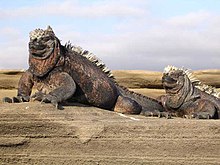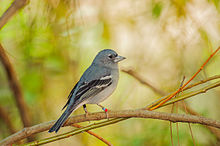Endemism
The term endemism is used in biology to indicate that the distribution of a taxon is limited to a geographic area smaller than a continent and that it does not occur naturally in any other part of the world. Therefore, when it is indicated that a species is endemic to a certain region, it means that it can only be found naturally in that place. On the other hand, when a taxon is distributed throughout the planet, it is referred to as a cosmopolitan distribution.
Endemism can be considered within a very wide range of geographic scales. Thus, an organism may be endemic to a mountain top or lake, to a mountain range or river system, to an island, to a country, or even to a continent. Usually the concept is applied to species, but it can also be used for other taxa such as subspecies, varieties, genera or families.
Generally, the word endemism must be accompanied by other information that specifies where it is unique from. For example, the Teide blue finch is said to be endemic to Tenerife, because it is exclusive to the island of Tenerife.[citation required]
Some examples of endemic species
A very typical case of endemism is that of the Iberian lynx, typical of the Iberian Peninsula, or the giant sequoia, which is only found in the Californian Sierra Nevada.
The islands, given their isolation, are places with a high rate of endemism. Thus, Australia, which has not had contact with the rest of the emerged lands for more than 50 million years, has an exclusive flora and fauna that is very different from the rest of the world. Half of the birds on the island of New Guinea and half of the mammals that inhabit the Philippines are endemic.
In this sense, Madagascar stands out; all of its amphibians are endemic, 90% of its reptiles (half the chameleon species on the planet), 55% of its mammals (such as lemurs and fossa), and 50% of its birds are endemic, and about 80% of its plants do not inhabit any other region of the world. 95% of the fish species in the African Great Lakes are endemic.
Volcanic islands, which have never been in contact with the mainland, are especially rich in endemic species; the species that inhabit them are descendants of those that arrived in the past and were able to adapt. Excellent examples are the Hawaiian archipelago or the Galapagos Islands (which inspired Charles Darwin's famous theory of evolution), and the Canary Islands, with 500 endemic plant species and specifically the island of Tenerife, which has the highest ratio of floristic endemism of the Macaronesian region.
An extreme case of endemism is the fish Cyprinodon diabolis, which lives exclusively in a single hot spring in Death Valley National Park. In the count that was made in 2014, thirty-five specimens were counted.
Conservation
Endemic species can easily be in danger of extinction due to their restricted distribution. Some scientists believe that the presence of endemic species is a good method for finding geographic regions that should be considered priority for conservation. Thus, endemism is used to estimate the biodiversity of a region.
Contenido relacionado
Olga Ladyzhenskaya
Cx
Annex: Manned missions to space by program


